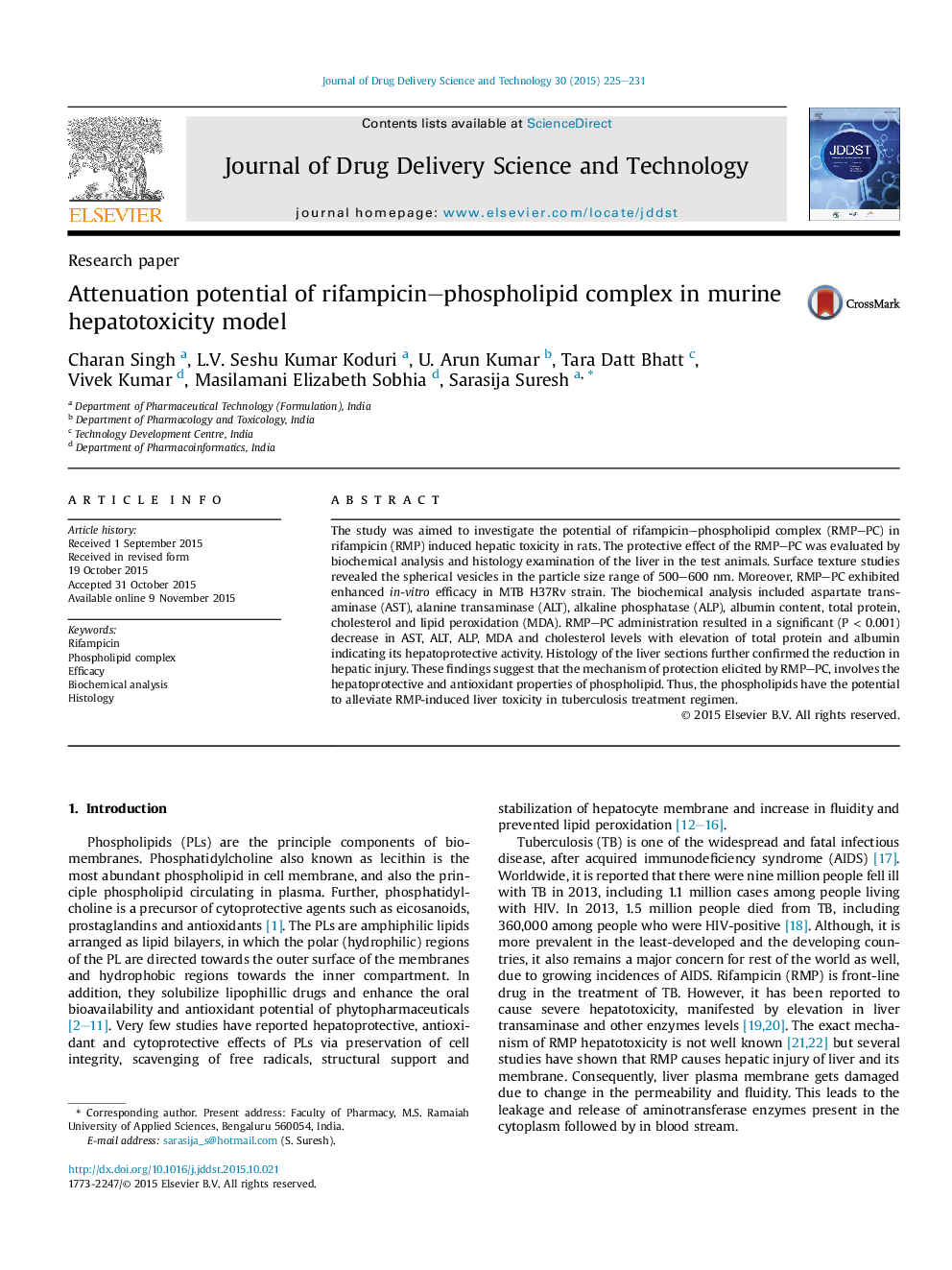| Article ID | Journal | Published Year | Pages | File Type |
|---|---|---|---|---|
| 2483191 | Journal of Drug Delivery Science and Technology | 2015 | 7 Pages |
The study was aimed to investigate the potential of rifampicin–phospholipid complex (RMP–PC) in rifampicin (RMP) induced hepatic toxicity in rats. The protective effect of the RMP–PC was evaluated by biochemical analysis and histology examination of the liver in the test animals. Surface texture studies revealed the spherical vesicles in the particle size range of 500–600 nm. Moreover, RMP–PC exhibited enhanced in-vitro efficacy in MTB H37Rv strain. The biochemical analysis included aspartate transaminase (AST), alanine transaminase (ALT), alkaline phosphatase (ALP), albumin content, total protein, cholesterol and lipid peroxidation (MDA). RMP–PC administration resulted in a significant (P < 0.001) decrease in AST, ALT, ALP, MDA and cholesterol levels with elevation of total protein and albumin indicating its hepatoprotective activity. Histology of the liver sections further confirmed the reduction in hepatic injury. These findings suggest that the mechanism of protection elicited by RMP–PC, involves the hepatoprotective and antioxidant properties of phospholipid. Thus, the phospholipids have the potential to alleviate RMP-induced liver toxicity in tuberculosis treatment regimen.
Graphical abstractFigure optionsDownload full-size imageDownload as PowerPoint slide
